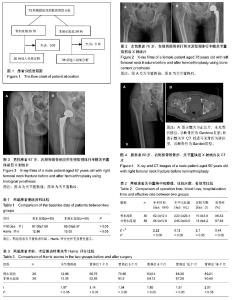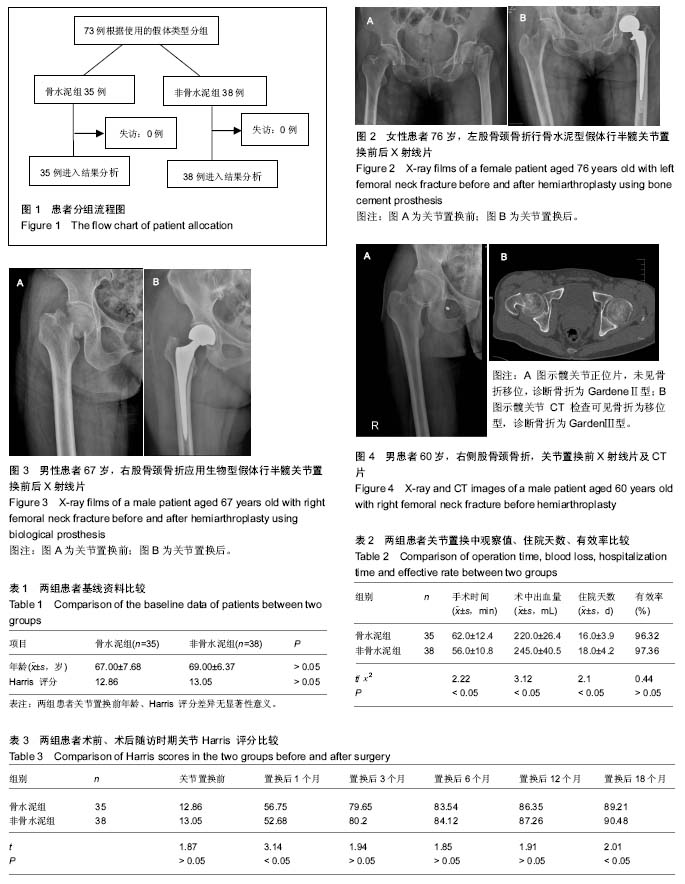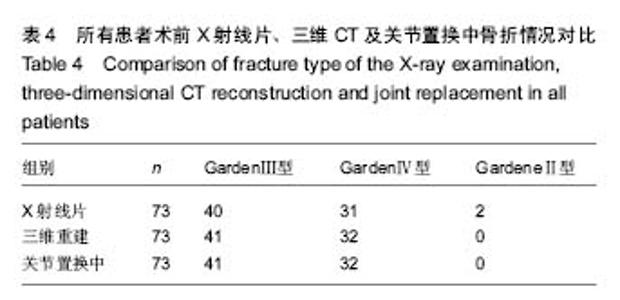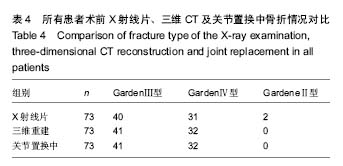| [1] 危杰,周力,王满宜.股骨颈骨折术后股骨头缺血性坏死的发生及转归[J].中华骨科杂志,2005,3(1):4-9.[2] 陈虹,蒋电明.老年人股骨颈骨折治疗与预防[J].创伤外科杂志, 2009,8(5):464-467.[3] 李海峰,亓玉彬,李强,等.老年人股骨颈骨折手术治疗进展[J].中国老年学杂志,2013,6(3):721-723.[4] 吴梅祥,白波,钱东阳,等.高龄老年人股骨颈骨折人工全髋与半髋关节置换术的选择[J].中华关节外科杂志:电子版,2009,6(03): 315-319.[5] 何宗战,高尚,王慧杰,等.全髋关节置换术治疗老年人股骨颈骨折疗效分析[J].中国当代医药,2010,30(26):15-16.[6] 姜超,梅炯.股骨颈骨折分型的研究历史与展望[J].中国矫形外科杂志,2014,12(10):902-906.[7] Holt G,Smith R, Duncan K, et al.Changes in population demographics and the future incidence of hip fracture.Injury. 2009;40:722-726.[8] 曾秋荣.中老年股骨颈骨折全髋关节置换术和骨折内固定术临床比较[J].当代医学,2012,4(1):92-93.[9] 戴腾.全髋和半髋置换治疗老年股骨颈骨折的比较研究[J].实用骨科杂志,2010,6(3):174-176.[10] Parker MJ, Pryor G, Gurusamy K. Cemented versus uncemented hemiarthroplasty for intracapsular hip fractures:a randomised controlled trial in 400 patients. J Bone JointSurg [Br]. 2010;92-B:116-122.[11] Figved W,Opland V,Frihagen F,et al.Cemented versus uncemented hemiarthroplasty for displaced femoral neckn fractures. Clin Orthop Relat Res.2009;467:2426-2435.[12] Taylor F, Wright M, Zhu M. Hemiarthroplasty of the hip with and without cement: a randomized clinical trial.J Bone Joint Surg [Am].2012;94-A:577-583.[13] Tryba M, Lindel, Voshage G, et al.Histamine re1ease and eardiovaseuar reaetions to implantation of bone cement dung total hip replaeement.Anaesthesist.2009;40(1):25-32.[14] 张毅,马平,土臻,等.非骨水泥人工髋关节假体周围骨折[J].骨与关节损伤杂志, 2006;11(6):731-732.[15] Quintrec JS, Coste J.Positive effect of patient education for hip surgery:a randomizedtrial.Clin Orthop. 2003;9(414): 112-120.[16] Thomsen NO,Jensen CM,Skovgaard N,et al.Observer variation in the radiographic classification of fractures of the neck of the femur using Garden's system.Int Orthop. 1996; 20(5):326-329.[17] 夏铁成,郝建学,王明吴,等.x线片与64层螺旋cT三维重建技术在股骨颈骨折的应用价值[J].山西医药杂志, 2013,42(13): 764-765.[18] Kain MS,Marcantonio AJ,Iorio R.Revision surgery occurs frequently after percutaneous fixation of stable femoral neck fractures in elderly patients.Clin Orthop Relat Res.2014; 472(12):4010-4014. |



